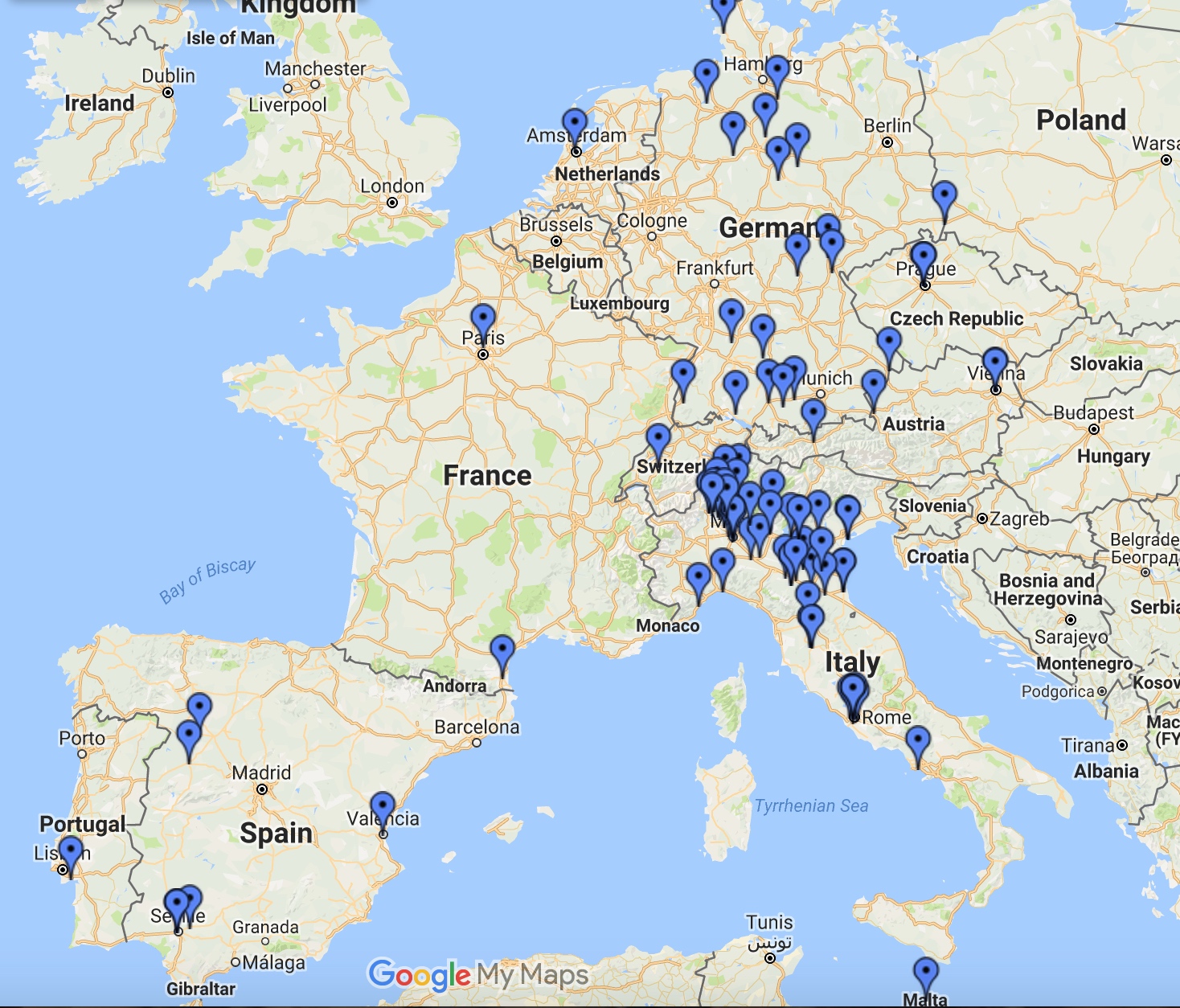Below is a map plotting 94 examples of trombone art contained in sacred settings (churches, cathedrals, and monasteries). They are limited to Europe, pre-1800. I make no claim that this is comprehensive (although I have a grant in the works that will help); right now, it is simply what I have been able to find and document. The art is mostly paintings, although there are some sculptures as well. I have only included works that are in situ; that is, they have not been removed from their original setting and placed somewhere else like a museum or personal collection. Due to the nature of the map plotting program, in some cases the viewer is able to get a good feel for sheer numbers (e.g., northern Italy), while in other cases, where there are many examples in the same city (e.g., Rome), numbers may be obscured because the markers overlap.
What is this map good for? That depends on what you’re looking for. You should be able to get a general feel for a specific category of trombone art; 94 examples is certainly enough to start to see broad patterns.
To see the images themselves, see the Trombone History Timeline.
•Updated 5/13/16 to include Bononi in basilica di Santa Maria in Vado, Ferrara, Italy.
•Updated 7/12/16 to include church of San Giorgio Maggiore in Venice, Italy.
•Updated 7/22/16 to include Santa Maria delle Grazie in Brescia, Italy; church of Santo Stefano in Verona, Italy; and Sanctuario di Santa Maria di Pol in Pastrengo (Verona), Italy.
•Updated 8/23/16 to include chiesa parrocchiale dell’Invenzione di Santo Stefano in Mombello, Italy.

Henry Howey
You need to catalog the too many Italian sites pre-1700 with trombones with a TORTIL that suggest the instrument of the soloist, the trombone in G.
wkimball
I’ll put that together sometime. I have seen quite a few visual examples of that extra length of tubing.
Robert Holmén
Looks like the trombone was mostly a Holy Roman Empire thing.
wkimball
Personally, I think it’s difficult to say exactly what it means, really. Many, many Italian sites. That is probably at least a partial reflection of trombone activity and the instrument’s cultural symbolism in northern Italy. But I also wonder if another aspect of it is more practical; e.g., perhaps Italians were also simply more likely to decorate their churches extensively with visual art. And that could in turn reflect an Italian cultural value of visual art in general, plus Catholic-Protestant differences (including Protestant iconoclasm). As Fats Waller famously said, “One never knows, do one?”
DRB
This might be clearer on a period map. Is that Bohemia and Moravia on the right? It looks like Catalonia is clear of trombones. Maybe a time lapse series.
wkimball
Good ideas! Thanks. Google maps was a good starting point because it’s free and easy to use. But those both sound like great improvements.